In the northern plains of Costa Rica, roads are scarce and splattered with dust and mud due to the lack of asphalt, but it is almost the only way to get to the Caño Negro Wildlife Refuge. Skipping potholes in the dirt tracks, crossed by hundreds of hectares cultivated with pineapples, and after passing through a small local village, you reach this hidden natural gem away from the great tourist masses that occupies 10,000 hectares between wetlands, forests and pastures. This is a true paradise of animal life that attracts ornithologists and fishermen in the vicinity of the Nicaraguan border and its large Lake Cocibolca.
In Caño Negro the main tributary is the Frío River, which has a length of 100 kilometers and becomes a safe home for more than 315 species of birds, 160 of mammals and 50 species of fish, among which the gaspar fish stands out. This omnivorous animal is considered a living fossil, since its appearance has not changed in 150 million years; that is, since the time of the dinosaurs. Due to its characteristics, it is also called lizard fish, since it shares some morphology with reptiles. Although what attracts the most attention is its skull in a single plate, a long, trunk-shaped jaw with 2 rows of very sharp teeth and shiny scales that are used by the village artisans to make souvenirs.
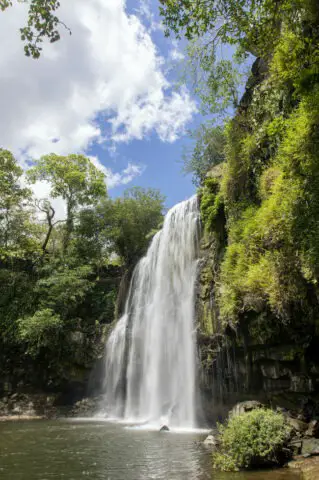
The female gaspar fish, which the locals call “mares”, are larger than the male and lay about 40,000 eggs in shallow river areas, between 20 and 50 centimeters, which makes them an easy prey for dragonflies, spiders and other fish. However, it has been traditional fishing that has notably declined its population due to its very tasty meat, similar to that of prawns or prawns, which is why the authorities have imposed an annual ban that begins on March 1 and ends on August 31.
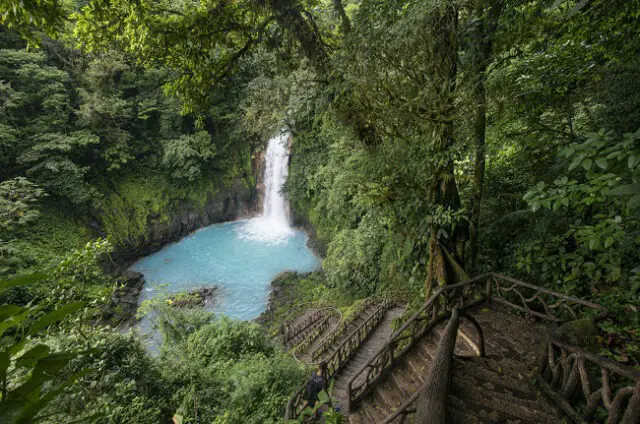
The locals, about 500 in the town, usually eat it at home, but there is a food house outside of Caño Negro that usually serves it on specific occasions, such as the Tabacón Restaurant on the road to Upala. Rosi Arqueda, our guide in this magnificent wetland, tells us that the largest piece that has been captured is still a female of 14.76 kilos and 1.31 meters in length in 2014 and that every year a Festival of the Gaspar, where you can buy objects almost always from the bones and scales of this prehistoric fish.
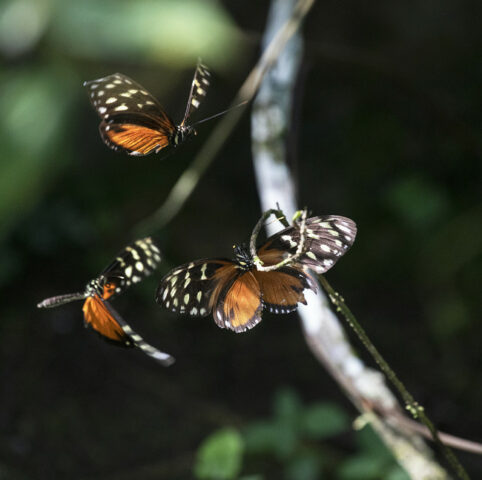
The largest artisan exhibition is in the butterfly farm of the town that Carmen Jiménez has run for 15 years, another incentive to visit Caño Negro, since more than 20 species of lepidoptera can be observed. According to Doña Carmen, who personally leads a small tour for US$ 5, the butterflies lay many more eggs in her garden thanks to the pieces of pineapple that she scatters in every corner, always decorated by herself with ornamental plants.
In the northern plains of Costa Rica, roads are scarce and splattered with dust and mud due to the lack of asphalt, but it is almost the only way to get to the Caño Negro Wildlife Refuge. Skipping potholes in the dirt tracks, crossed by hundreds of hectares cultivated with pineapples, and after passing through a small local village, you reach this hidden natural gem away from the great tourist masses that occupies 10,000 hectares between wetlands, forests and pastures. This is a true paradise of animal life that attracts ornithologists and fishermen in the vicinity of the Nicaraguan border and its large Lake Cocibolca.
In Caño Negro the main tributary is the Frío River, which has a length of 100 kilometers and becomes a safe home for more than 315 species of birds, 160 of mammals and 50 species of fish, among which the gaspar fish stands out. This omnivorous animal is considered a living fossil, since its appearance has not changed in 150 million years; that is, since the time of the dinosaurs. Due to its characteristics, it is also called lizard fish, since it shares some morphology with reptiles. Although what attracts the most attention is its skull in a single plate, a long, trunk-shaped jaw with 2 rows of very sharp teeth and shiny scales that are used by the village artisans to make souvenirs.
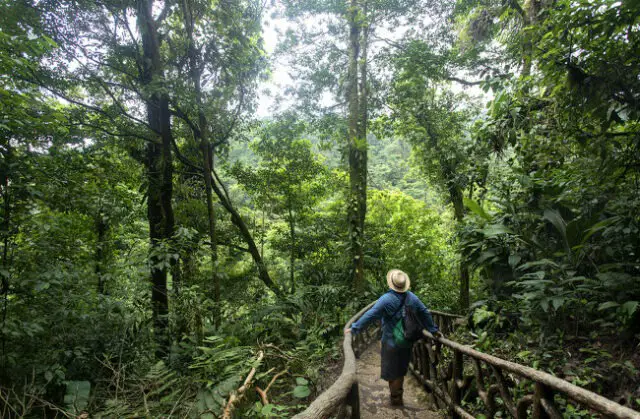
The female gaspar fish, which the locals call “mares”, are larger than the male and lay about 40,000 eggs in shallow river areas, between 20 and 50 centimeters, which makes them an easy prey for dragonflies, spiders and other fish. However, it has been traditional fishing that has notably declined its population due to its very tasty meat, similar to that of prawns or prawns, which is why the authorities have imposed an annual ban that begins on March 1st and ends on August 31st.
The locals, about 500 in the town, usually eat it at home, but there is a food house outside of Caño Negro that usually serves it on specific occasions, such as the Tabacón Restaurant on the road to Upala. Rosi Arqueda, our guide in this magnificent wetland, tells us that the largest piece that has been captured is still a female of 14.76 kilos and 1.31 meters in length in 2014 and that every year a Festival of the Gaspar, where you can buy objects almost always from the bones and scales of this prehistoric fish.
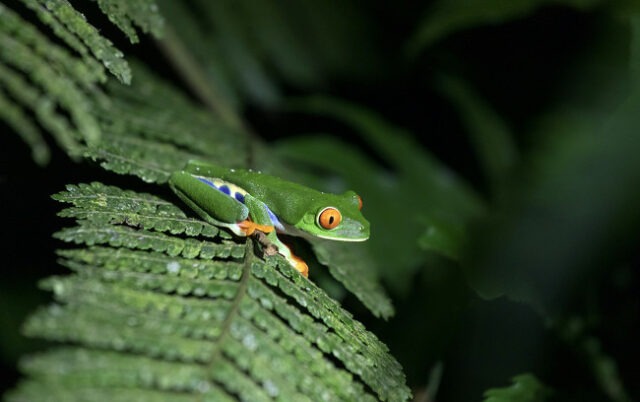
The largest artisan exhibition is in the butterfly farm of the town that Carmen Jiménez has run for 15 years, another incentive to visit Caño Negro, since more than 20 species of lepidoptera can be observed. According to Doña Carmen, who personally leads a small tour for US$ 5, the butterflies lay many more eggs in her garden thanks to the pieces of pineapple that she scatters in every corner, which are always decorated by herself with ornamental plants.
The Tenorio National Park, created in 1995, protects endemic and endangered species. In fact, its fauna is very abundant, with the tapir, the puma and howler and white-faced monkeys, among many others, and its flora is surprising due to the diversity of palms, heliconia, ferns, bromeliads and orchids. The residents of Bijagua, the town closest to the park, also feel very committed to this natural balance and some of them, such as Donald and Pip (he is a naturalist guide from Bijaguen, and she is an Australian adventurer), not only provide accommodation in their charming Casitas Tenorio bed and breakfast, but they try to recover the flora and fauna of these forests in a private nature reserve, acquired 16 years ago and baptized with the name of the Tapir Valley, also trying to instill in neighbors and visitors the urgent need to curb poaching.
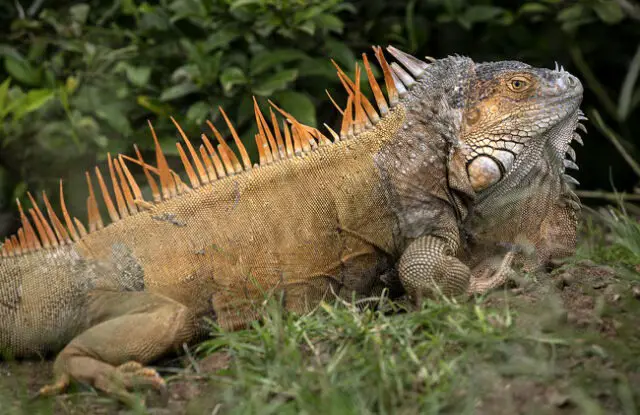
The couple has had a hard time with the Covid-19 pandemic, but continues to show guests their paradise, where it is possible to see up close the tapir, sloths with their babies, toucans, snakes, big heads and the fearsome velvet and a whole world of nocturnal frogs and toads, among many other species. “We show the animals to the people who come,” says Pip, “so that they know why Costa Rica is a land of pure life and we are proud that in our valley there are no connections or internet, only forest to take their energy that we all need”.
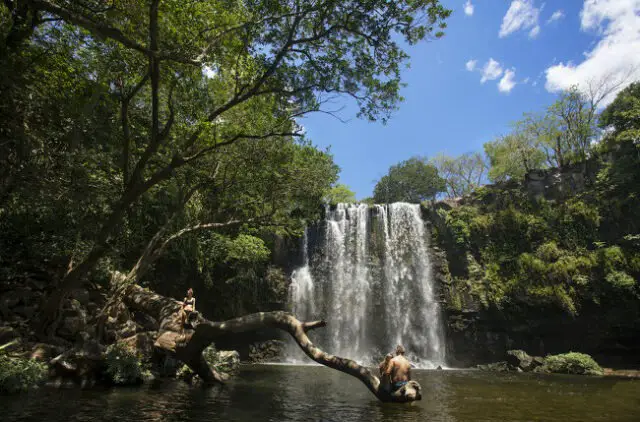
Next to the Tenorio is another sleeping giant, the Miravalles volcano, which unfolds through beautiful landscapes ideal for traveling on horseback and later, in that Pacific Ring of Fire that culminates in the Orosí volcano on Costa Rican soil, Rincón de la Vieja emerges. Around 25 kilometers northeast of Liberia, the capital of Guanacaste, this mystical volcano recalls the legend of an indigenous princess who fell in love with an enemy warrior. The princess’s father, not happy with this relationship, threw the young man into the crater. In order to always be close to him, the princess retired to live next to the volcano and learned to heal with the local plants until her old age.
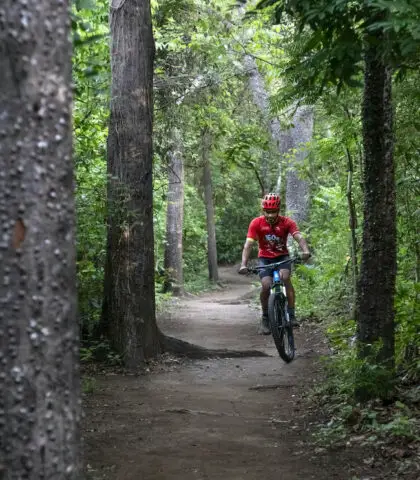
For this reason, local people began to call it the Rincón de la Vieja. Today, the volcano remains one of the most active in Costa Rica with 9 craters, a place of cloud forests where waterfalls, fumaroles, geysers and hot springs are concentrated. It was declared a national park in 1973 in order to protect the 32 rivers and streams that are born in its foothills and to cross it there are 2 trails, the longest leads to the Cangreja waterfall and the small one becomes a circular walk full of small boiling mud lagoons, known as pailas, and striking fumaroles that emerge from the thick forest.
In this forest mass stands out a population of purple guaria, the national flower of Costa Rica, in the wild, and a very varied fauna with mammals such as the saino, the guatusa, the tolomuco, the armadillo, or the white-faced monkeys, and such iconic birds as the quetzal, the rainbow toucan or the electric hummingbirds, which could almost pass for an insect.
On the lower slopes remain the old cattle farms that now offer accommodation, horseback riding, zip lines, downhill tires and thermal baths with therapeutic properties for the skin and allergies, among a handful of outdoor leisure activities. The most important is Hacienda Guachipelín, for which you must always pay US$ 1 in a kind of highway toll, if you are not a hotel client and simply want to visit the area and the national park. Until 1988, this was a cattle ranch that visitors approached on foot or on horseback as there was no road and the journey from Liberia to the volcano took 5 hours using a colt, a fact that ended up turning it into a hotel to shelter the curious people who came to Rincón de la Vieja and were surprised by the night.
The Oropéndola Waterfall
Within the hacienda there are 7 waterfalls, but the most spectacular is the Oropéndola waterfall, whose waters fall from 25 meters high into a turquoise pool where it is possible to bathe in an environment surrounded by the beautiful vegetation of the Blanco river canyon. .
Ricardo Salvador
The tour of the north of Costa Rica would not be finished without visiting the Guanacaste coast, which occupies most of the North Pacific. Its beaches attract thousands of visitors, especially between the months of December and May, where an average temperature close to 34 °C is reached. It is then when surfers and bathers enjoy the water and the red sunsets, the first to enjoy the strong waves that collapse along the coast and the second looking for the refuge of the most protected beautiful bays, always full of pelicans and frigates.
Naranjo Beach, Grande Beach, Tamarindo Beach and Black Beach
These are very popular for surfers and surfers, while Playa Hermosa and Playa Panamá near the Gulf of Papagayo are more recommended for a dip.

